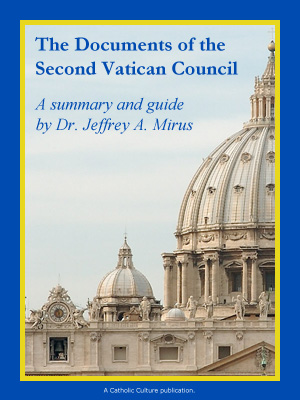Catholic Activity: Story-Telling
Story-telling has become a lost art. Let us revive this beautiful tradition in the family.
DIRECTIONS
There is no substitute for story-telling. The reading of books, privately or aloud, the listening to radio and watching television — all these devices cannot replace one single, live story told around the fireplace or on the front porch on a summer night, or after the bonfire has died down.
Admittedly, it is not an easy art. Many people have found that out and have given up before trying hard enough.
A lot of story-telling has gone on in our house. My husband was a master of it. When he started to tell about his trip around the world in an old-fashioned frigate as a cadet first class, or of his participation in the Boxer Rebellion in China when he was nineteen, or of his adventures in the first newly invented, poorly constructed submarines, we all would sit spellbound, oblivious of time.
Once we spent a delightful summer with Robert Flaherty and his family. He was another master of this forgotten art. Almost every night, on the lawn in front of his Vermont home, he told about his experiences with the Eskimos, or with the South Sea people — again banishing time.
One is always sure of captivating an audience with ghost stories. There are plenty of true ghost stories — one just has to look for them — true because they might tell of an experience with the world beyond.
It isn't so much what we tell — as long as we are willing to revive this forgotten art. Our Lord gives us an example. Some of the most beautiful stories ever told come from Him — the story of the Prodigal Son, of Lazarus, of the Good Samaritan.
And now we have reached the most important point of all. When sermons or devotional books tell us that the Christian family should fashion itself on the example of the Holy Family, this usually refers to the spiritual life only. "If there were more mothers like Mary and more fathers like Joseph, there would be more children like Jesus," it is said, Mary being thought of as the holy handmaid of the Lord, Joseph as the man nearest to God, and the Infant "subject unto them." Nowhere have I seen that thought extended to the whole of our family life, calling us to model our recreations, also, on the example of the Holy Family. It is not at all likely that Jesus, Mary, and Joseph would have gone to some of the shows in our movie theatres or into any one of our night clubs or the average Broadway show. It is quite probable, however, that there was story-telling, singing, and discussion going on in the evenings in the little house in Nazareth; and why shouldn't they have played games with the little Boy and His friends, or listened to music played on the quaint ancient instruments by some neighbors? Joseph may have read to his family, and whenever they accepted an invitation to a wedding of one of their kinfolk, they certainly participated in the solemn dancing which formed part of any oriental wedding ceremony.
A word from the Book of Wisdom is often applied to Our Lord or to His Holy Mother: "My joy it is to be with the children of men." Should we limit this "togetherness" to one hasty half-hour on Sundays, from eleven to eleven-thirty? Knowing that it means such joy for them, let us invite the Holy Family to stay with us throughout the days of the week, throughout the years of our life when we work or pray and also when we play.
Activity Source: Around the Year with the Trapp Family by Maria Augusta Trapp, Pantheon Books Inc., New York, New York, 1955







